Ancient Near East
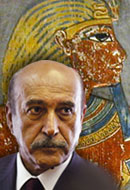 The Pharaoh’s General, and Mubarak’s
The Pharaoh’s General, and Mubarak’sMonday, February 7, 2011 by Alex Joffe | Jewish Ideas Daily » Daily Features
The general was a commoner. He rose through the ranks as a career soldier, attracting attention for his prowess and dedication. Becoming a soldier-diplomat, he fought Egypt's battles, negotiated with troublesome neighbors, and served several kings in succession.
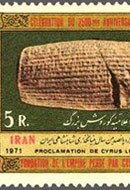 Cyrus, Ahmadinejad, and the Politics of Purim
Cyrus, Ahmadinejad, and the Politics of PurimTuesday, February 1, 2011 by Alex Joffe | Jewish Ideas Daily » Daily Features
Anyone who deplores the politicization of the past should have been apoplectic in September 2010 at the sight of Mahmoud Ahmadinejad receiving the loan of the "Cyrus Cylinder" from officials of the British Museum.
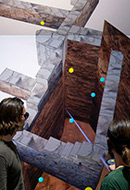 Science, Faith, and Biblical Archeology
Science, Faith, and Biblical ArcheologyMonday, January 17, 2011 by Alex Joffe | Jewish Ideas Daily » Daily Features
Biblical archeology was born out of twinned desires: to "illuminate" the world of the Bible and, ultimately, to prove the truth of the Word.
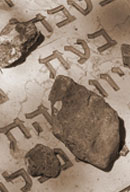 Cemetery Politics
Cemetery PoliticsWednesday, September 1, 2010 by Allan Nadler | Jewish Ideas Daily » Daily Features
Among the many bones its various enemies pick with the Jewish state, one has been much in the news lately: bones, very dry bones, residing in cemeteries both real and imagined all across the country.
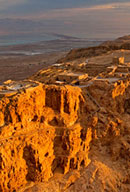 Digging King Herod
Digging King HerodFriday, August 20, 2010 by Aryeh Tepper | Jewish Ideas Daily » Daily Features
King Herod was a Jew of doubtful origin who ruled Israel in the years 40-4 B.C.E. During this same period, the Roman republic was being replaced by the Roman Empire with its vast expansionist aims. Relying on Roman support for his power, Herod was, in effect, Israel's little Roman emperor. And he played the part, bringing administrative order and economic prosperity to the country and creating hugely ambitious architectural projects. In the Roman way, he was also cruel, paranoid, and thorough, killing his wife, three sons, and an assortment of other relatives and confidants.
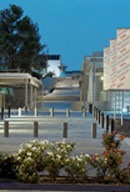 The New Israel Museum
The New Israel MuseumFriday, August 13, 2010 by Aryeh Tepper | Jewish Ideas Daily » Daily Features
An expanded and revamped Israel Museum re-opened to the public in late July after three years of renovations. While the modest architecture remains as it was, the modernist cubes rolling with the Jerusalem landscape, the jumble of buildings has been streamlined: 25,000 square feet of exhibition space have been added, but the number of items on display has been reduced by a third. Overall, the design is significantly more user-friendly, with a spacious new entrance hall leading to the museum's remarkable collections, including its three most significant wings: archeology, Jewish art and life, and fine art.
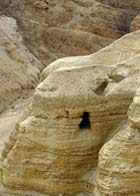 A Dead Issue?
A Dead Issue?Monday, February 15, 2010 by Elli Fischer | Jewish Ideas Daily » Daily Features
Since the electrifying discovery of the Dead Sea Scrolls at Qumran in the late 1940's, the scholarly consensus has been that they were produced by the Essenes, a small Second Temple-era Jewish sect known to us from Josephus. Last year, a book by Rachel Elior, Memory and Oblivion: The Secret of the Dead Sea Scrolls (Hebrew), upended this seemingly settled issue by contending that, in fact, the Essenes never existed. Elior's revolutionary thesis, argued with force and stridency, has been discussed in major mainstream publications from Israeli newspapers to Time magazine. But the controversy, and clashing assessments of her achievement as a historian, have...
Editors' Picks
Found on Hanukkah Zafrir Rinat, Haaretz. Excavations near the Western Wall unearthed a rare clay seal that appears to have been used to authenticate the purity of ritual objects used in the Second Temple.
From Haran to Hebron Moshe Gilad, Haaretz. One anthropologist is on a campaign to mark the 1,200 kilometer path traveled by the patriarch Abraham through Jordan, Syria, Iraq, and Israel.
Tangled Up in What? Joel Davidi, Toledot Am Ha-Sefer. Josephus refers to "a remembrance upon the arms" (which may or may not be figurative); Aristeas refers to a "sign around the hand" (same). Why are the earliest Jewish sources on tefillin so ambiguous?
Holy Land Stonehenge Associated Press. In Arabic, the site's name means "stone heap of the wild cats." In Hebrew it is known as the "wheel of ghosts." Just what is the mysterious prehistoric structure?
Dead Sea Discoveries Edward Rothstein, New York Times. In a new exhibition, the Dead Sea Scrolls are treated not as the beginning of a history, but as its culmination—almost the reverse of their usual treatment.
Who Lived in Qumran? Biblical Archaeology Society, Bible History Daily. An architectural analysis of the area where the Dead Sea Scrolls were discovered supports the identification of the community as a Second Temple-era Jewish sect known as the Essenes.
On Holyland Hill Nir Hasson, Haaretz. Four thousand years ago, what is today the site of a housing project on the outskirts of Jerusalem was a Bronze Age graveyard serving the villages in the valley below.
Reviving the Dead Sea Scrolls Jon Stokes, Cloudline. Google's digitization of the Dead Sea Scrolls will enable easy public viewing and radically advance the tools, and the cause, of historical scholarship.
Hitting Bedrock Nadav Shragai, Israel Hayom. Two-thousand years after Herod's builders laid them, the foundation stones of the ancient Temple of Jerusalem have at last been uncovered.
Tunnel Vision Ari Rabinovitch, Reuters. Israel's subterranean caves, dug for use in guerrilla warfare against the Romans, now offer an exciting tourist experience to the adventurous.

